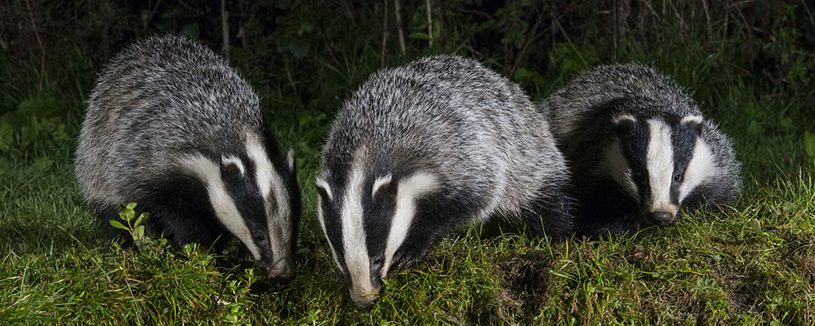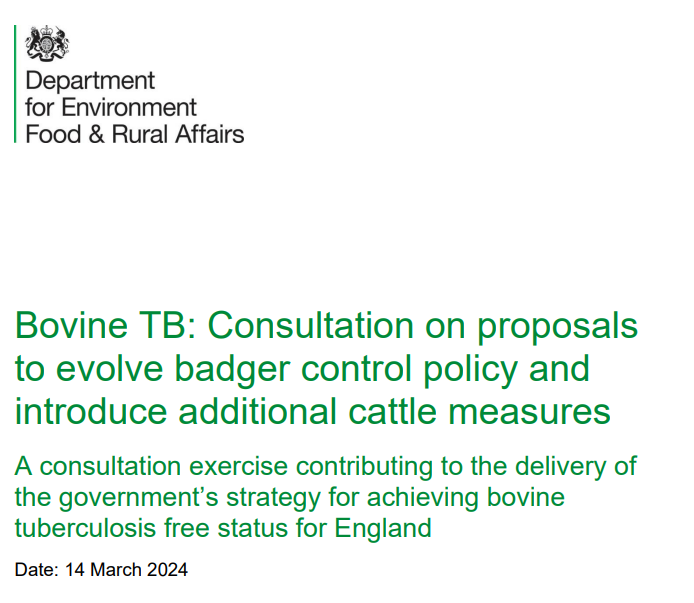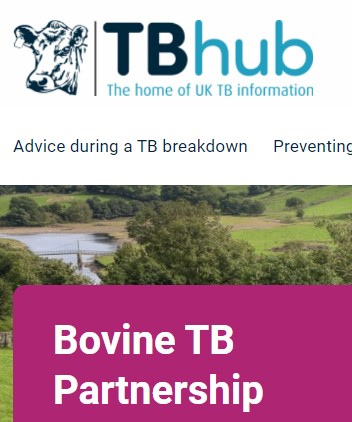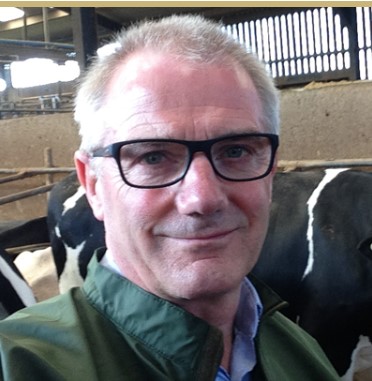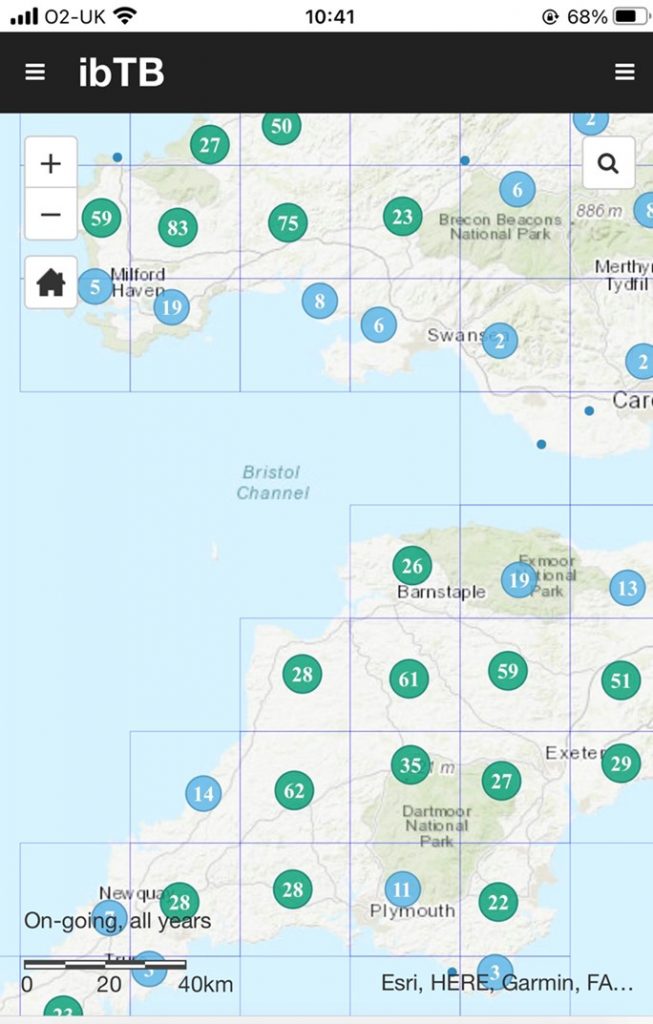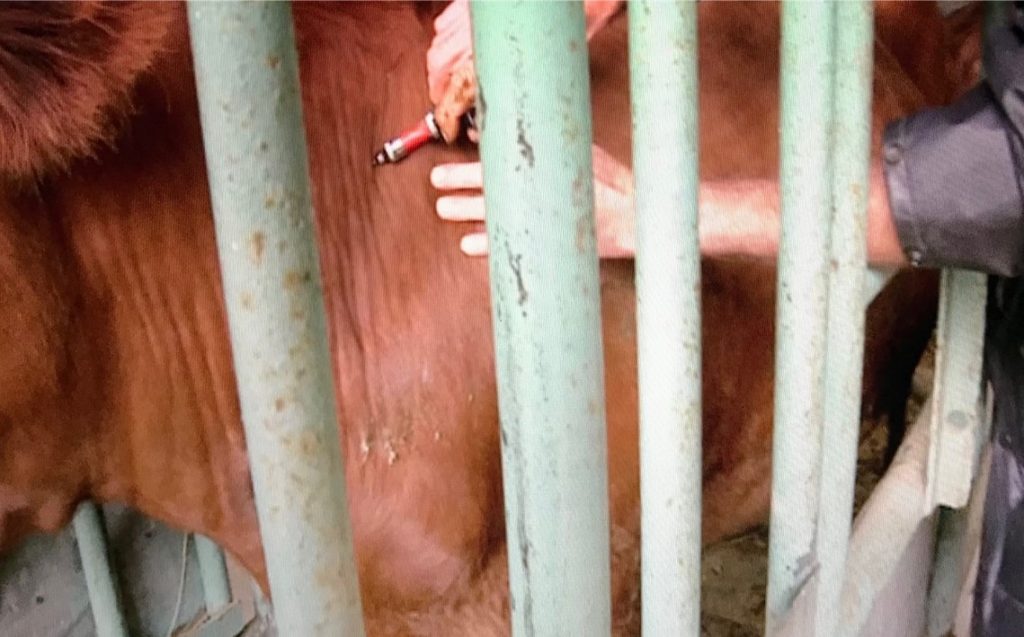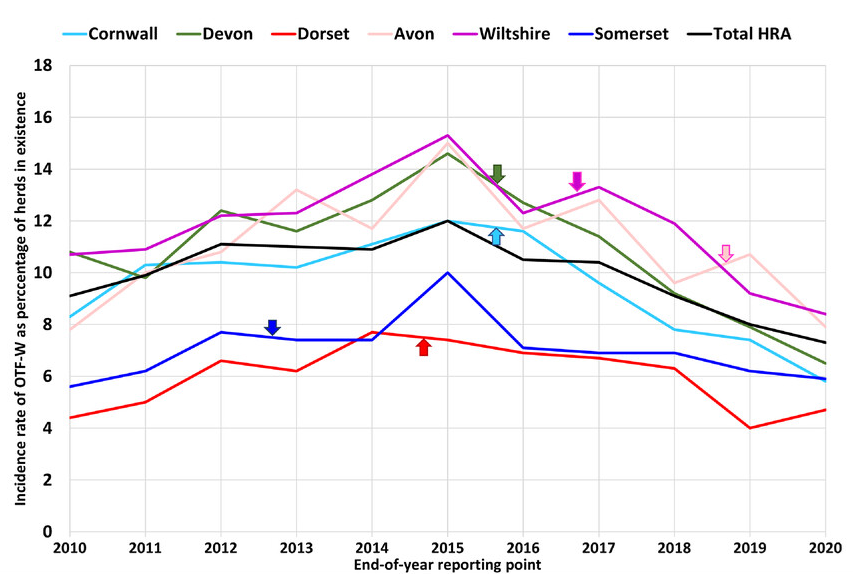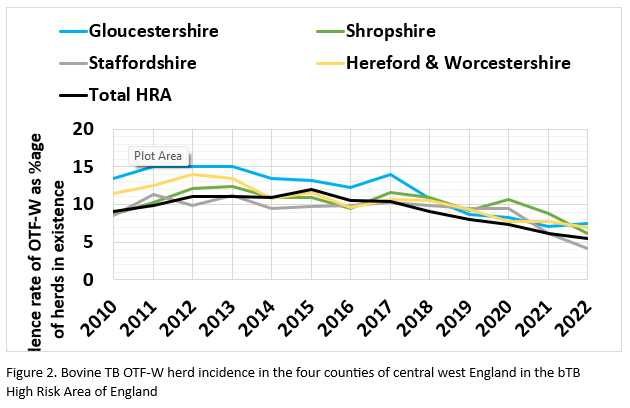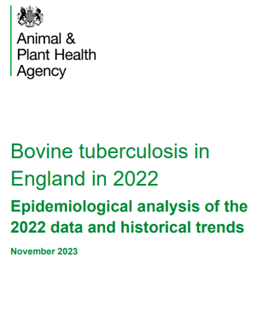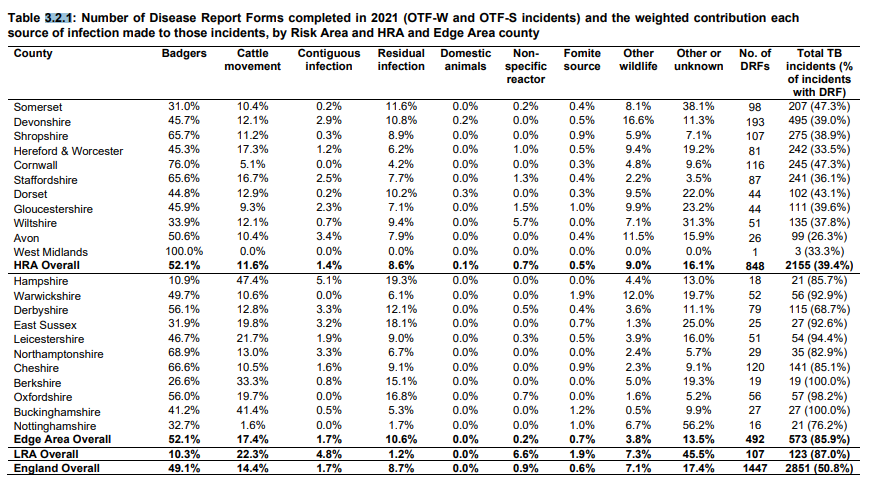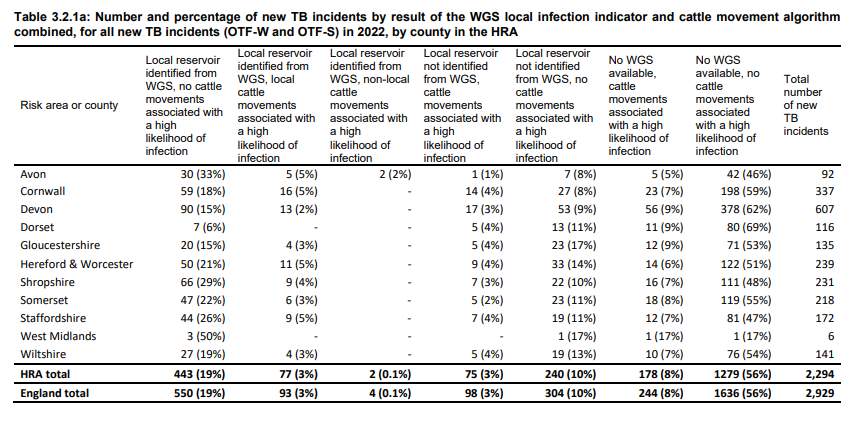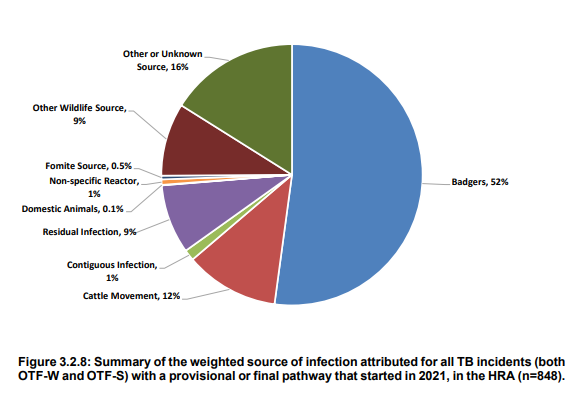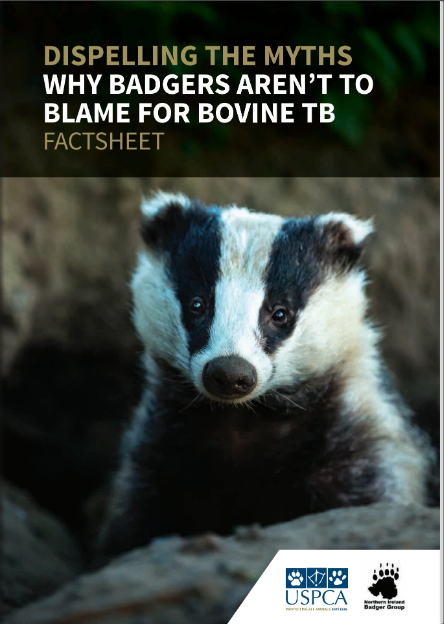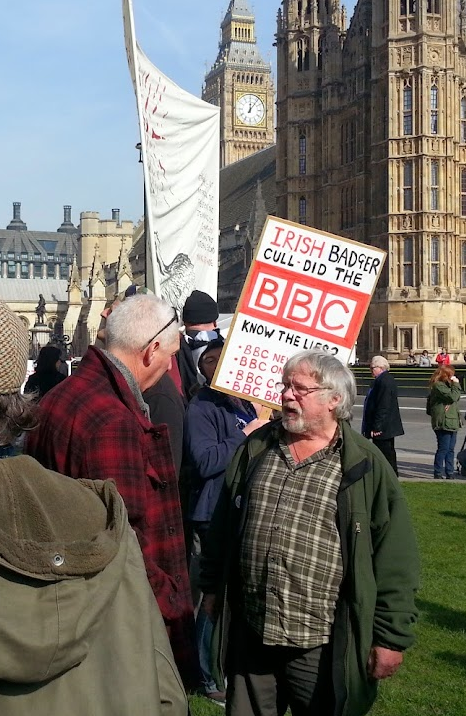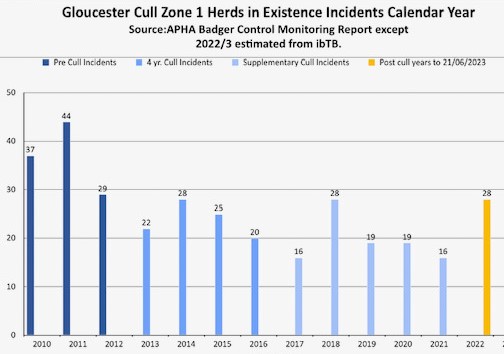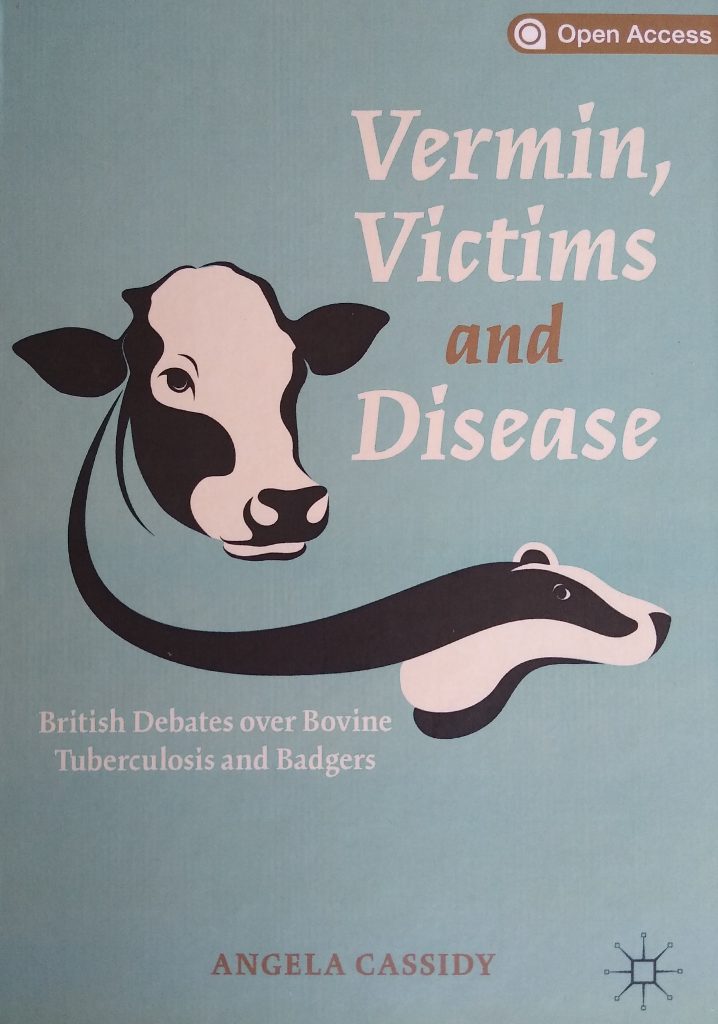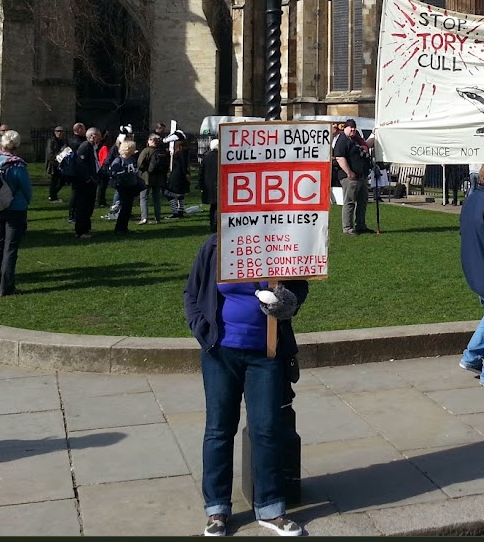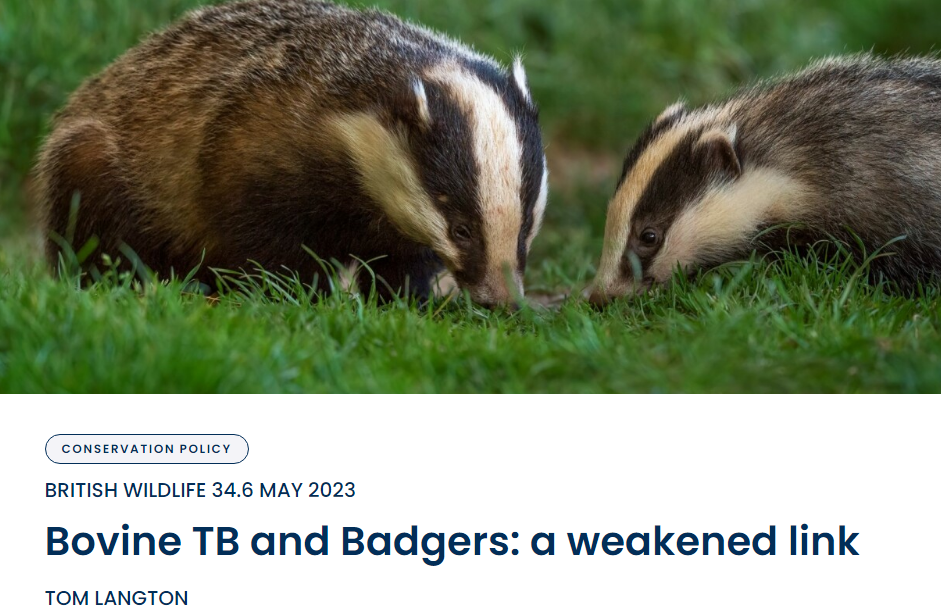What does it say and mean?
On 14th March, Defra launched a new consultation:

A five week consultation period ends on 22 April, so here is a digest of what is proposed. It’s is a bit long, but important if you care about truth, bovine TB control in cattle, badgers, cruelty and the squandering of public finances.
SUMMARY
This consultation is badly worded in places and the detail is hard to comprehend. It appears unrealistic in terms of scale and implementation. The questions asked in this consultation are minimal and generally loaded towards the respondent agreeing with the described process to keep on killing healthy badgers into the future.
The consultation is founded on the incorrect interpretation of a new study Birch et al. 2024, which itself is in need of revision. The robustness of the new study is open to question, and aspects of it are now being queried with the Minister and the authors.
Defra are back-tracking on the March 2020 ‘Next Steps’ policy in favour of continued forms of supplementary and low risk area culling in existing and new areas, as directed by the Defra Chief Veterinary Officer. The methods for selecting ‘cluster areas’ for badger culling is not prescribed and effectively leaves a free hand for culling at the CVO’s discretion aided by industry advisors.
All previous Defra badger cull consultations have resulted in implementation of the policies as set out in the consultation, whatever the responses have been. Defra have made it clear that they will consider ‘group’ objections differently to personal objections.
We feel this consultation is unlawful and should be withdrawn and as such cannot recommend anyone responding until further advice has been received.
Consultation Foreword by Steve Barclay Secretary of State for Defra.
It is hard to know if the mistakes in new Minister Barclay’s foreword are unintended. It was probably written for him by Defra staff, perhaps the Chief Vet, who as we know struggles with science papers. On the back of the brand new APHA research he says “I want to be clear. A major element of this success has been the industry-led cull of badgers. The latest evidence from the first 52 cull areas shows that rates of bovine TB breakdowns in cattle are down on average by 56% after four years of culling. This analysis has been published in a scientific journal after rigorous peer review. “
Leaving aside whether the peer review was rigorous and independent or not, Barclay, the Secretary of State for EFRA is attributing the decline in detected cattle herd breakdown incidence to four years of badger culling, as has the Defra Minster Douglas-Miller. This is now being repeated widely in farming circles. But the science Barclay refers to does not support this, even if it implies it in the abstract. There is a bit of speculation about it in the discussion, that is all.
Call this lies or misinterpretation, there really is no such clarity from ‘the latest evidence’. Even Cambridge’s Defra-funded James Wood had to correct the over-simplified abstract of the new APHA paper (Birch et al) for a piece in last weeks Veterinary Record. The misleading abstract should be a simple retrospective corrective edit for the journal, along the lines of other government funded bTB science. We will see.
On this point Defra boss Douglas Miller had been making the ‘56% benefit’ claims for months, based on a preprint that was corrected when published. To be really, really clear, what the peer reviewed published science says is that it is not possible to directly attribute the fall in cattle herd bTB breakdowns to badger culling. It could all be due to cattle testing or other factors. Recent alternative published peer-reviewed analyses strongly suggest that this is the case (Langton et al). The courts could be interested in the misrepresentation of science by the Minister.
Also not mentioned in the consultation is the fact that the statistical code for the Birch paper (instructions on how it was analysed) is not included in the supplementary information published with the paper, so it can’t be checked. Requests to the author for this code and to the Minister have not yet been successful. Defra have received a legal letter asking for it promptly but it had not arrived by the noon deadline on 20th March. There are several things about the analysis that look a bit odd and which deserve further scrutiny, so supply of information to be able to re-run the analysis is critical to an ‘intelligent and informed response’ to the 14th March consultation.
PART A – BACKGROUND
This gives the usual statistics of change in bTB levels around the issue. There are comments about an ‘adaptive policy’, ‘banking the benefits’ and ‘striking a balance’, but none of these claims are scientifically evidenced and are mostly seem to be throw-away blah from Defra staff and the shambolic BTB Partnership.
PART B – PROPOSAL 1
The report text then switches from its assertive attitude in the Ministers statement to be a bit more careful. It says: “5.2. The policy of badger culling, which has been in place since 2013, is highly likely to have contributed to this significant reduction in the disease.” Not sure any more then? Still wrong – should have said ‘could be’. Paragraph 5.3 implies the reduction of bTB breakdown incidence is due to badger culling, which is an incorrect assumption and not borne out by the Birch study, as was also made clear by Oxford’s Prof David McDonald’s analysis earlier this year. A more detailed look at Birch et al.(2023) pre-print is available here and here.
Defra then repeat their outburst from two years ago, rejecting independent peer reviewed science in a top Vet journal, that suggested badger culling brings no response to bTB control, as follows:
“We acknowledge that this analysis has been challenged by certain groups opposed to culling who analysed the publicly available data from cull areas up to 2020 11. These groups concluded that culling had no effect on bTB in cattle. This peer-reviewed analysis was published in the Veterinary Record journal in March 2022. The Defra Chief Scientific Adviser (CSA) and UK Chief Veterinary Officer (UK CVO) assessed this paper and found the analysis to be flawed. The UK CVO and CSA response (and a later correction) was published in the Veterinary Record12,13 although the authors reject the criticisms of the UK CVO and CSA 14.“
An outburst that APHA have still, after 24 months, failed to demonstrate scientifically – despite holding all the data, in secret. It would be possible for APHA to simply compare farms in culled and unculled areas in multiple ways to test for the efficacy of culling. Why have they not done this? Is it because they do not get the result that they are desperately seeking to support the policy? The signs are that internally, APHA actually know they are wrong. One senior insider has said privately in response to the consultation “the momentum created by Godfray is being stifled as DEFRA considers that the solution is too difficult and too expensive….. convincing themselves that the cull has worked to avoid the embarrassment of their mistakes.”
What are the future badger killing consultation proposals in general?
- Construct a narrative that ‘badgers are a part of the local disease problem’ using circumstantial evidence from dead badger surveys.
- Remove the all-important ‘exceptional use’ requirement of the March 2020 Next Steps policy, so badger culling can expand across the whole of England (HRA/EDGE/LRA), as before.
- Change the term ‘cull area‘ to ‘cluster area’. Talk about ‘targeted badger intervention’ when all that has happened is cull areas have been renamed.
- Rename ‘cull company’ as ‘licence holder’ who will appoint gunmen for both cage shooting and cruel free shooting, and it appears, badger vaccinators (Para 5.30).
- Allow unlimited cluster areas to be licensed for culling each year (Para 5.18). Licenses to last for one year at a time.
- Keep the 100% culls in the Low Risk Area using the ‘’Hotspot’ approach, which remains more or less the same, and a model for ‘clusters’. Death by APHA terminology.
- The public will continue to pay for the licensing operation and monitoring, as well as the cost of policing culls, and support with costs incurred by industry when carrying out badger vaccination (Para 5.35).
- Defra infer that the objective of a targeted badger intervention policy would be to secure disease control benefits by reducing the potential for infectious contacts between badgers and cattle in cluster areas ”before eradicating infection in cattle herds within the affected cluster” (Para 5.7). This has not previously been suggested, i.e. badger culling is a prerequisite for cattle measures to be able work. This is not borne out by scientific literature and evidence. As such it is speculative and an attempt to mislead consultees regarding disease epidemiology.
How will cluster/cull areas be chosen?
- APHA say cattle movement data and use of ‘whole genome sequencing’ of dead cattle and badger samples will inform the process. But it is unclear how, and sight of the method is lacking. There is no mention of the detailed independent report from 2023. that found the process failed and unfit for purpose. How cluster areas are chosen can be changed at any time it seems, a free reign for government.
- “Breakdowns that could be caused by high-risk cattle movements will then be removed, to increase the accuracy of identifying areas where badgers are a part of the problem in the spread of disease to cattle.“ This does not make sense, why would the source matter if cattle have gone on to infect badgers. This does not even follow the twisted APHA logic.
- Cull supremo Christine Middlemiss, the UK CVO, will oversee deciding which clusters should be eligible for badgers to die. She might use ‘epidemiologists and veterinary science experts’ from the Bovine Tuberculosis Partnership – the closed cabal of mostly farmers and cull operatives that helped to refine these ideas. That works in secret and seems largely unaccountable.
- Defra apparently have a magic bullet up their sleeve: “We are developing a surveillance and monitoring system which, when fully implemented, would allow for an assessment of the level of risk that local badgers may pose in a cluster.” We need to see and understand this pipe dream to be able to consider it.
- The culling season will be relaxed from a fixed duration of around 10 weeks to the free-for-all allowed in Supplementary and Low Risk Area culling, to enable maximum culling of badgers. It seems to faciliate 100% culling if you want it, through to the end of January of the following year.
Badger vaccination – the new bolt-on
- The failed BTB Partnership has apparently indicated that badgers should not be vaccinated before being culled in the HRA or Edge (Para 5.17) and the LRA (Para 5.21) because it would take too much effort.
- After culling for two years or more, any surviving/recolonizing badgers may be vaccinated, and this is a condition of culling. Although government may fund vaccination, it appears farmers do not want to vaccinate badgers.
Note, in Cumbria it looks as if badger numbers bounce back within very few years, as they have in Gloucestershire, so the number of badgers needing vaccination is going to be massive. Especially as loads of areas that still have bTB embedded have been coming out of supplementary culling and are now due for badger vaccination according to the APHA vision. Or are government going to wait for badger numbers there to build up and cull large numbers again later? Or launch a military-scale exercise to get them vaccinated? Has anyone really thought this through? Thousands of people, tens of thousands of cages and vaccines. Or will it be a token effort to cover for just more culling?
This consultation, if taken at its word, could be a mandate for massive amounts of badger vaccination starting this year with no culling. But no, the unproven ‘shoot then vaccinate in new areas’ idea is pushed hardest, no doubt to win the anti-badger audience:
- “The licence holder would also need to demonstrate, that it is able to vaccinate badgers in the year immediately after culling is stopped and for (typically 4) years as advised by the UK CVO (para 5.32). They must establish, with government support, cage trappers and lay vaccinators, organising training or securing a contractor to undertake badger vaccination. “
Other changes:
Defra will take over licensing from Natural England (Paras 5.14 and 5.27), but NE will still be responsible for saying that ecological impacts are barely significant and will be waving culling through without properly monitoring its impacts on designated sites. While claiming that it does. Tony Juniper’s cull-championing charade looks set to continue. Tim Hill who claimed badger culls to be a success each year is leaving this summer though.
Un-culled areas can have farm biosecurity measures and badger vaccination if they wish. APHA think “The available evidence suggests that the factors affecting the transmission of M. bovis between badgers and cattle are highly context-specific and dependent on many interacting factors at a local level.” There is no scientific evidence base or consensus for this claim – unless it is hidden from view..
Nothing changes:
“Any decision by the Secretary of State on introducing licensed badger control under a targeted badger intervention licence will be informed by the scientific evidence and veterinary advice available, experience from the licensed badger control operations to date and responses to this consultation.” (Paras 5.24).
How will this be done and made available for scrutiny?
“Previous economic assessments of wildlife control policies indicated that badger culling largely represents positive value for money.” (Para 5.22).
This is simply not properly evidenced, with unexplained lumped figures, and the public are almost certainly being misinformed. Defra have no idea about the effect of measures on the true burden of disease in cattle, embedded and undetected.
PROPOSAL 2: Licence and associated conditions for badger culling under a targeted badger intervention policy
The size of future cluster areas is unclear but may be similar to existing cull areas – over 100 sq km. Within cull areas, Defra “will make decisions on the level of accessible land on a case-by case basis, taking into account such specific circumstances such as topography, land use and badger sett surveys or any other matter that is considered relevant” (Para 5.33).
The CVO has recently claimed (on Farming Today) that cluster culling is not the 100% culling approach of LRA culling (the proposed epi-culling model). But it looks like it. As cluster areas get bigger, the aim will be to kill 100% of badgers over available land which may be more restricted than was the case in the Cumbia and Lincolnshire cull areas. The system is not as well described as the 2018 low risk area culling methodology. It looks fairly similar, but in areas where permission to cull and vaccinate will be harder to obtain. There is no binding agreement for a minimum 6 years cull, and vaccinate it is all on trust. The bad idea is badly planned.
Strange?
Paragraph 5.36 states: “.. if a cluster overlaps with an area that has completed intensive or supplementary badger control within the last three calendar years, there would be no funding requirement.” This presumably means no need of disclosure of available funds to cull. “If the interval is longer than this, the licence holder will need to demonstrate that it has access to funds which are sufficient to carry out culling operations in eligible clusters for at least two years,” This might imply that there will be an overarching licence holder for more than one cluster. It’s all a bit unclear. Why would a supplementary culling area not go straight to vaccination only, or is the aim just an extension of supplementary culling? Why not go straight to vaccination? The text is hard to unravel and looks ill-prepared.
“Culling in response to bTB outbreaks in the Low-Risk Area of England would continue to be permitted on the same terms as introduced in 2018, on an individual licence basis”. But LRA culling is the model for epi-culling which was not warranted and has failed. Just recently a new breakdown in the area.
Methods for the HRA /Edge seem to imply it will not be LRA-style culling (with a buffer area etc) but more like a hybrid with supplementary culling, according to cluster area size. Will cluster areas cull to hard boundaries or not? Thus, the consultation presents a lack of clarity and ambiguity to a degree that makes meaningful response impossible.
PROPOSALS 3 and 4
These relate to cattle purchasing and cattle movement monitoring and are not considered here.
Annex A: Wildlife disease control – Progress since 2020
Defra states (Para 1.10.) “We proposed to pilot the vaccination in areas as part of a phased approach. APHA has recruited two cohorts of full-time vaccinators in 2022 and 2023, who have been undertaking badger vaccination in several areas across the country, including in five former cull areas. These areas vary in size from 15 to over 350 km2, with more than 1,500 badgers vaccinated in England by APHA in total in 2023.”
There is absolutely no chance of vaccinating badgers in more than a very few cluster areas for multiple reasons, so this consultation is misguided not only in its scientific evidence base, but also regarding the feasibility of vaccination ever happening other than at the existing token scale. A phased approach that will fizzle out.
Information on the pilot exercise in Cumbria is sketchy, and it is not possible for the public to understand exactly what is being done: the recovery rate of badgers, how many vaccinated badgers have been shot and how many vaccinated twice, or how many badgers have bTB of different strains. The consultation is describing an unevidenced process that is more hope than reality, that it cannot afford and will not seek to properly implement, for which there is no evidence that it will have any effect at all, and breaking multiple scientific and ethical veterinary and good practice guidelines. It is representative of a failed policy.

